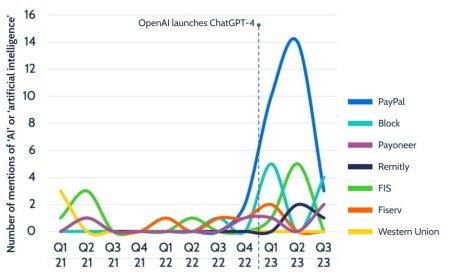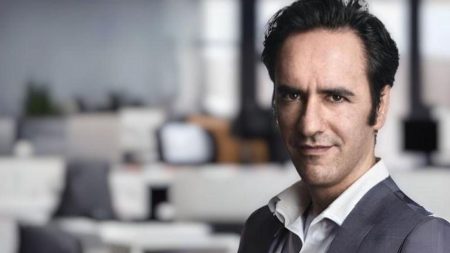Anyone who pays attention to the world of investing knows of the disparity between different demographics of founders when it comes to raising. For example, women-founded startups got just 1.9% of all VC funding in 2022, TechCrunch reported, a figure that was down from the previous year. Founders of colour have also seen their share of funding decline from an already low starting point, according to research conducted by BLCK VC and Silicon Valley Bank. That’s an issue, not only because it means entrepreneurs receiving funding don’t represent society’s makeup, but also because it means VCs are highly likely to be missing out on the best deals — it’s proven that more diverse founders are more successful.
That’s where the concept of “allyship” comes in. It’s a concept that has evolved over time, from the idea that those in the same self-identified minority group support each other and only each other, to something much broader — ”now the expanded definition includes those from the majority being ‘allies’ to the minority”, Deepali Nangia, Partner at Speedinvest told me. Allyship is a way for investors to ensure the distribution of funding is more equal across demographic groups, and also to ensure they can find the best businesses out there.
Allyship Is Evolving
Allyship means different things to different people, but Anna Ott, VP People at HV Capital, told me, “In essence, allyship is not just supporting underrepresented people; it’s about converting everyone, especially those in power, into agents of change.”
This perspective, that allyship is now about having an industry-wide commitment to action in order to open up both funding and the opportunity to work in the VC industry to all, is also held by Don Hoang, Partner at Atomico. He told me, “In the past, it may have been seen as a passive act, but today, it’s understood as a proactive and dynamic process. It involves listening, learning, and using one’s perspective, influence, and resources”
Many in the VC industry who are supportive of allyship agree that not enough listening has been done historically but that the situation is starting to change. That’s vitally important to those within the investing ecosystem, be they investors or founders, getting a better understanding of different people’s life experiences. Ruth Foxe Blader, Partner at Anthemis and co-founder of the WVC:E initiative, which brings together women and male allies to increase diversity in venture capital, emphasises that the most important thing those wanting to be allies can do is to simply ask “What do you think?”.
By asking people their opinion and listening to the response, a very simple act that’s rarely done in the world of business, then individuals can better understand why others think or act in a certain way, and what hurdles they have faced that the majority of other people haven’t. For those in the VC industry and more broadly, that enables people to act as more effective allies.
The Impact Of Allyship
Those within the world of VC who have embraced allyship have spoken about its positive impact within their organisations. At Atomico it’s now become “second nature” according to Hoang, meaning the team supports each other and their founders across all roles and levels, enabling them to find and nurture the best businesses.
This sense of support is something that AML intelligence system and recent recipient of funding from Atomico, Strise, founder Marit Rødevand agrees with. She told me “Atomico looks quite different from others on the VC side…there’s a partner leading the investment, but I felt the allyship the wider team have.” For her that’s vital because it provides a sense that the whole organisation is working with her to achieve the same end goals for Strise.
At HV too, there’s evidence of the power allyship can have within the world of VC. The fund has increased female representation in the investment team from zero to 30% in three years which is something Ott is very proud of, but as she points out, “This isn’t about meeting quotas; it’s about laying down milestones that move the needle on diversity and inclusion.”
To Ott’s point, there’s a consensus among those who believe in allyship that it’s good not only for the VC industry and founders, but society at large. Nangia says that, “It is about thinking beyond oneself and [in so doing] enabling social and economic mobility which is super important for us as a society.”
That’s why Blader told me in an interview that allyship is a major theme for this year’s WVC:E event, for which I sit on the committee. The conference team is now inviting male allies to attend for the first time.
“Because we’re all in it together and there’s tremendous benefit to humanity to not doing things the way we’ve done them before — the only way we’re going to really change things is if we have all genders on board,” Blader explained.
How The Industry Can Do More
All the VCs spoken to for this piece agree that there is more to be done when it comes to allyship. Ott pointed out that there’s a lack of transparency within the VC world that’s vital when it comes to potential deals but hinders progress in other areas. In particular she suggested the sharing of Diversity, Equality and Inclusion metrics and benchmarks saying, “Diversity can’t be a competitive edge. We need more data transparency and knowledge exchange on DEI to state the status quo and to make change significant.”
Hoang emphasized that “allyship is not a one-size-fits-all approach” but that single-demographic initiatives have a role to play in creating a “safe space” for honest conversations to happen. Meanwhile, Blader emphasised the need to openly challenge norms, such as proving there isn’t a “pipeline problem” when it comes to finding women founders, by holding founders’ showcases.
There were also suggestions from numerous interviewees that investment funds need to look within themselves to start identifying where existing processes were getting in the way of a culture of allyship emerging. Roberta Ferrari, Senior Investment Manager at Sony Ventures said, “Venture capital firms should take proactive steps by internally assessing and ensuring the right mix of diversity within their management teams. Having a diverse range of people in the decision-making seats is critical.”
The concept of allyship remains poorly understood by many in the world of investing . That needs to change, not only so the industry can meet modern societal expectations and norms, but also so it can do better at finding the most successful businesses of the future.
Disclosure: I have been part of the WVC:E event organisation committee since its inception in 2022. My role is purely voluntary and I receive no compensation for my participation.
Read the full article here















